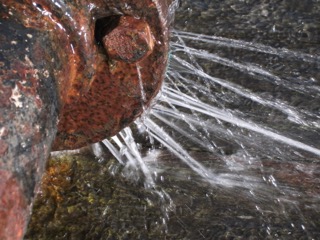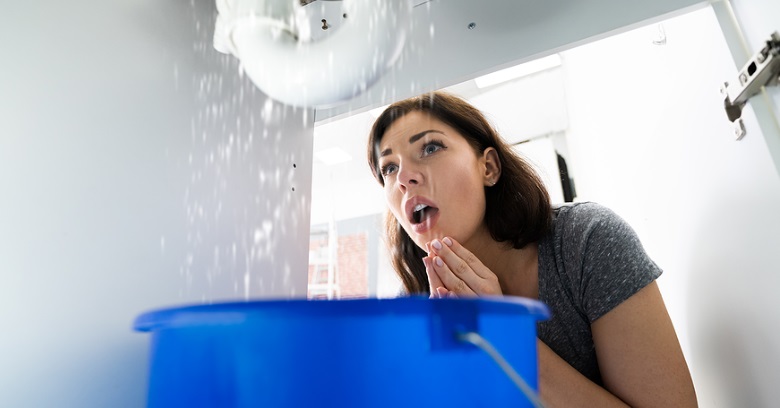Burst Pipes? No Panic! Just how to Detect and Fix Quickly
Burst Pipes? No Panic! Just how to Detect and Fix Quickly
Blog Article
Listed here below you might get more dependable points in relation to How to Install and Connect a New Dishwasher.

A burst pipeline is a major emergency; you can just stand as you view water you pay dearly to rejoin with the planet. In worse situations, you discover a swimming pool on your kitchen area flooring, which is a great journey hazard, specifically if you have kids around. If the pipeline that ruptured was in your wall surfaces, bad news: you might need to paint that entire area.
How can a calamity like a ruptured pipe be stopped as well as taken care of? Well, by listening to your specialist emergency plumbing technicians and also complying with these regulations.
How do I understand when my pipes have ruptured?
Varying water pressures
Pipelines do not just burst in a day. You might have noticed that your kitchen area faucet or shower doesn't run promptly when you turn the faucet. It might pause for a couple of secs and then blast you with even more pressure than typical.
In various other instances, the water may appear regular initially, after that decrease in pressure after a couple of secs.
Contaminated water
Lots of people think a burst pipe is a one-way electrical outlet. Fairly the contrary. As water flows out of the hole or tear in your plumbing system, impurities find their way in.
Your water might be infected from the source, so if you can, check if your water tank has any type of troubles. However, if your drinking water is supplied and also detoxified by the city government, you should call your plumber right away if you see or smell anything amusing in your water.
Puddles under pipelines and also sinks
When a pipe bursts, the discharge develops a pool. It may show up that the pool is expanding in dimension, and regardless of the number of times you wipe the pool, in a couple of minutes, there's another one waiting to be cleaned up. Commonly, you might not have the ability to map the puddle to any type of noticeable pipelines. This is a sign to call a professional plumber.
Wet walls as well as water spots
Prior to a pipeline ruptureds, it will certainly leak, most times. If this persistent leaking goes unnoticed, the leak may graduate into a large tear in your pipeline. One very easy means to prevent this emergency is to keep an eye out for damp wall surfaces advertisement water discolorations. These water discolorations will certainly lead you right to the leakage.
Untraceable trickling sounds
Pipeline ruptureds can take place in one of the most undesirable locations, like within concrete, inside wall surfaces, or under sinks. When your home goes quiet, you might be able to hear an irritatingly consistent leaking noise. Even after you've examined your shower head and also cooking area faucet, the leaking may continue.
Dear reader, the dripping might be originating from a pipeline inside your wall surfaces. There isn't much you can do regarding that, except tell a specialist plumber.
Show up the Warmth
Establish followers to blow warmth right into chilly rooms. Keep the garage door shut. If you have actually minimized water flow, heat one of the most at risk pipelines (typically in basements as well as crawl spaces or near outside walls) with a hair clothes dryer. Leave the faucet on while you use warmth. As you melt ice, the circulation will certainly boost. To stop pipelines from freezing, shield your wall surfaces.
Begin Eliminating the Water
Grab the wipe, pails as well as a shop vacuum cleaner to start to eliminate the water because you absolutely don't want it saturating into everything else in your house. And also, a quick tidy up will reduce the opportunities of something getting moldy.
What do I do when I identify a burst pipeline?
Your water meter will certainly continue to run also while your water wastes. To reduce your losses, find the major controls and transform the supply off. The water mains are an above-ground structure beside your residential property.
How to Fix & Detect a Leaking Pipe
How Do I Know if a Pipe is Leaking?
Leak detection tests can help you determine if your pipe has a leak. Even if you don’t see an apparent leak, you should still conduct leak detection tests regularly to save water and money—and prevent major damage to your home.
Water meter. It can be helpful to figure out what your usual water meter usage numbers are and then monitor them regularly. To monitor your meter, first, turn off all water faucets in your home. Check the meter and write down the numbers. In a few hours, check the meter again. If the numbers have changed, you have a leak. Water gauge. Use a water gauge to test your water pressure. Your showerhead should produce a certain amount of water pressure based on its model and design. If the pressure is lower than it is supposed to be for that specific showerhead, your home likely has a leak. Puddles. Look inside your bathroom, laundry, and kitchen sink cabinets. Puddles around the cabinets or around toilets, tubs, showers, and washing machines indicate the presence of a leaking pipe. You may also notice loose tiles, peeling or flaking paint, or mold caused by water accumulation. Napkin test. Even if you don’t see any puddles, you may still have a leak. You can test for water leaks in the bathroom, laundry, and kitchen by wiping below-sink connections with a napkin, paper towel, or piece of toilet paper. If it becomes damp, you probably have a leaking pipe under the sink. Discolored walls. Walls that are discolored—usually with brown or yellow stains—or bulging might mean that they have been impacted by water damage caused by a leaking pipe. Smell. A leaky pipe will create sitting water, and over time, that water may develop a musty smell. If your home smells musty, but you can’t locate the source, it may be due to a leak. Steps for Fixing a Leaking Pipe
A leaky drain can be remedied by tightening the pipe base, replacing the drain seal, caulking the rim, and tightening the pipe nut. Similarly, a leaking toilet pipe can be treated by tightening the packing nut. You may also need to replace the valve. A leaky faucet may just need tightening or replacement of the washers. If that doesn’t work, consider replacing your faucet. If your pipe has a hole in it, you may want to use a pipe leak sealer or pipe leak tape. This quick fix for water pipe leaks can also temporarily fix a copper pipe leak. https://www.ahs.com/home-matters/quick-tips/how-to-tell-if-pipes-are-leaking/

I found that blog posting about How to Install and Connect a New Dishwasher while exploring the search engines. Sharing is caring. Helping people is fun. Thanks for taking the time to read it.
Click Here!
Report this page